New Music Track Supporting the UK’s Leading Neurodiversity Charity and Celebrating Difference, Inclusion and Equality, in Education and Beyond

Written by Gary Grange
Consultant and neurodiversity advocate with a passion for supporting young people who are neurodiverse and working with NGO’s and businesses to create positive social impact.
On the 24th June the Neurodiversity charity the ADHD Foundation launch the Umbrella Project which for the first time ever will feature a new dance track called We Will Rise, by songwriter, rapper and neurodiversity advocate J Grange (ft London Community Gospel Choir)
This project aims to help raise awareness of the 1:5 people who are neurodiverse and to celebrate equality in society, especially for those who are neurodiverse, many experiencing inequality and struggling in the education system.
What is neurodiversity?
Neurodiversity refers to the different ways the brain can work and interpret information. It highlights that people naturally think about things differently. We have different interests and motivations, and are naturally better at some things and poorer at others.
Most people are neurotypical, meaning that the brain functions and processes information in the way society expects.
However, it is estimated that around 1 in 5 people (around 20% of people in the UK) are neurodivergent, meaning that the brain functions, learns and processes information differently. Neurodivergence includes Attention Deficit Disorders, Autism, Dyslexia and Dyspraxia.
J’s educational experience
J experienced an horrendous time in education. As a young person with ADHD, which was not diagnosed until weeks before he sat his exams, he was constantly excluded from school and eventually sent to a Pupil Referral Unit. This impacted on his mental wellbeing and he suffered severe anxiety, depression and even suicidal thoughts.
Sadly, teachers and schools just did not know how to support J. With around 1:5 young people thought to be neurodiverse the education system needs to change. It needs to embrace the “difference” neurodiverse young people bring and to have a strength-based approach to learning.
The current statistics are both shocking and show that 39% of children with ADHD have had fixed term exclusions from school and that children with ADHD have more than 100 times greater risk of being permanently excluded from school than other children.
Compare this to the fact that around 35% of businesses owners are neurodiverse and you can very quickly see that with the right support neurodiverse young people can be successful.
Schools, academy’s, colleges and universities are slowly beginning to change but they need help.
J’s track is about his journey but also a message of hope and a call to end inequalities and divisions. To watch the music video from the 24th June and to support the need for the education to be more inclusive for neurodiverse young people please click here
If you are a school, academy, college or university for more information about neurodiversity visit the ADHD Foundation Neurodiversity Charity online, or follow on Twitter, Facebook and Instagram
On Kindness: Intentionality, #DEIJ, and Difficult Decisions
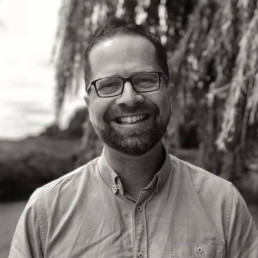
Written by Matthew Savage
Former international school Principal, proud father of two transgender adult children, Associate Consultant with LSC Education, and founder of #themonalisaeffect.
A few years ago, there was lots of talk about “random acts of kindness”, and many a school assembly took place across our schools, using that idea to encourage kind words and actions among and between staff and students.
However, I have since realised that kindness is never random. It is intentional. We make a conscious choice to be kind, or, conversely, not to be.
I reflected on this today, as a disabled, wheelchair traveller, treated like livestock at Madrid Airport: dumped in a corner and facing the wall, ignored, patronised and humiliated, and denied access to food, water or a bathroom, for 3 hours.
When finally pushed to the plane door, after every single able-bodied passenger and with minutes until take-off, I shared my experience so far, and then explained that I had mistakenly also been allocated a seat at the back of the plane, which I would not be able to reach without risk, pain, discomfort and delay, if at all.
I politely asked if the steward could request a passenger in a row further forward in Economy to swap with me, so as to avoid those things. They repeatedly, and emphatically, refused.
On hearing our conversation, a traveller in the very first Business row immediately stood up and insisted he swap with me and take my seat instead. The steward tried to persuade him not to do so, as he would lose his Business seat, but he made it quite clear that it did not matter, as my wellbeing and safety were more important.
I wish I could thank him properly. However, I suspect he would not mind. After all, when we intentionally choose kindness, we do so unconditionally and without expectation.
On the subsequent flight, I reflected further on this. In the leadership of our school communities, we also have the opportunity actively and intentionally to choose kindness, every single day – in our conversations and our actions; in policy and strategy; and in the decisions we make.
Sometimes this is easy, but when it feels difficult, we can and must still make that choice. We must ask ourselves what would be the kind thing to do. And then do that.
If kindness remains random, it will also be inequitably applied, and, in turn, perpetuate the marginalisation of those who need it most. Therefore, kindness should be at the heart of any #deij strategy too, and that strategy can help propagate intentional kindness as a result.
If we choose kindness, always, not only will kindness infuse the climate and culture of our schools, but others will follow our lead. Just like its absence, kindness cascades.
Does intentional kindness guide and permeate your school, or is it still random?
Facing The Challenges of Discrimination and Migrant Integration
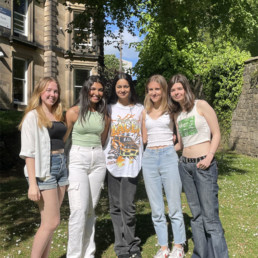
Written by Isabelle Watts
We are a Young Economic Summit Team from Sheffield Girls' who have reached the UK national finals. This is a topic we are all passionate about, and we have come up with a solution to reduce the discrimination migrants face.
As part of the Young Economic Summit we have researched the challenges migrants face and have developed a solution to mitigate these challenges. We are passionate about mitigating the discrimination migrants face and ensuring that they feel welcome into the countries which they choose to migrate to.
What challenges do migrants face?
Migrants face many challenges when they migrate due to discrimination from domestic born citizens. The media often fuels the discrimination by oversimplifying, misrepresenting or embellishing stories in order to attract attention. Consequently, people’s perception of migrants becomes negative and in many countries, such as the UK, migrants are seen as poorer, less educated and more likely to be unemployed than is the case. This creates barriers between migrants and domestic born citizens as they have pre made judgements of what they believe migrants to be.
However, it isn’t just the media that is exacerbating the challenges migrants face; it is also the policies implemented by the government. In recent weeks, the government has announced a new policy whereby any adult who comes to the UK without authorisation could be considered for relocation to Rwanda. Not only does this policy take away refugees’ control of their own lives and makes them more vulnerable to smugglers and traffickers, it also creates the idea that countries can pay to get rid of the responsibilities they signed up to under the 1951 Geneva Convention.
The desired situation:
The desired situation is a cohesive society where migrants and domestic born citizens are integrated and migrants feel welcomed into a country. Whilst migrants may inevitably face challenges, the aim is to try and support them as well as possible and remove the discrimination and intolerance of our society.
How to reach the desired solution:
One way in which we are trying to reach the desired situation is by conducting PSHE lessons on migration. In the long run this would reduce the discrimination migrants face as children will be taught what the different types of migrants are, what challenges they face, how to spot misinformation, as well as addressing the biases they may have already developed. Moreover, a supportive atmosphere will be created which encourages children to talk about their cultures and be proud of them. It is imperative that these lessons take place in primary school as by the age of 12/13, attitudes to race are fixed and become increasingly harder to alter. Although migration is in the PSHE curriculum, it isn’t compulsory and many schools avoid it. Therefore, we propose that set lesson plans are made which are compulsory to teach in PSHE lessons.
Another aspect of our solution is a widespread social media campaign reducing the misinformation spread about migrants. As part of this we have created eye catching social media posts that have facts that break down the stereotypes surrounding migrants. Consequently, people’s perception of migrants will begin to change and prejudices will be broken down.
Overall, we propose a twofold approach that takes into account the short and longer term. The national anti-racism media campaign will reduce discrimination in the short run, whilst the PSHE lessons will have a longer term effect. We believe that this is the most efficient strategy of reducing the discrimination migrants face due to misinformation, and allowing society to become more cohesive.
Please visit our website to find out more about our research, and fill in the form to show support for our solution.
Website:https://sites.google.com/she.gdst.net/migrant-integration-challenges/home
Form:https://docs.google.com/forms/d/1p363lLoHvigT2xWaZ0GnmNlQ-EOUrSsasSRbOsjKiG0/edit
Bibliography:
- Conzo P and others, ‘Negative Media Portrayals Of Immigrants Increase Ingroup Favouritism And Hostile Physiological And Emotional Reactions’ (2021) 11 Scientific Reports
- ‘What Are The Predominant Stereotypes About Immigrants Today?’ (Re-imagining Migration) <https://reimaginingmigration.org/what-are-the-predominant-stereotypes-about-immigrants-today/> accessed 15 May 2022
- Beirens H, and Davidoff-Gore S, ‘The UK-Rwanda Agreement Represents Another Blow To Territorial Asylum’ (Migration Policy Institute, 2022) <https://www.migrationpolicy.org/news/uk-rwanda-asylum-agreemen> accessed 15 May 2022
- Beirens H, and Davidoff-Gore S, ‘The UK-Rwanda Agreement Represents Another Blow To Territorial Asylum’ (Migration Policy Institute, 2022) <https://www.migrationpolicy.org/news/uk-rwanda-asylum-agreemen> accessed 15 May 2022
- Barnes D, ‘Why Helping Children Understand The Complexities Of Migration Is Vital’ (Teachwire, 2022) <https://www.teachwire.net/news/why-helping-children-understand-the-complexities-of-migration-is-vital> accessed 15 May 2022
- ‘Plan Your Relationships, Sex And Health Curriculum’ (GOV.UK, 2022) <https://www.gov.uk/guidance/plan-your-relationships-sex-and-health-curriculum#using-external-agencies> accessed 16 May 2022
DEI in an International Setting
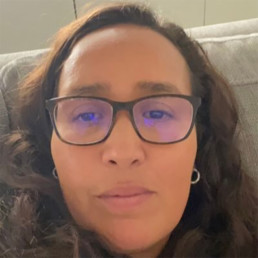
Written by Esther Mustamu-Daniels
Esther Mustamu-Daniels has 20 years of teaching experience working in London and the Middle East as a Class teacher, Education officer, Middle Leader and DEI Lead. Currently working at British School Muscat, Esther co-leads the DEI work across the whole school.
Many international schools are on or starting their journey of awareness of diversity, equity and inclusion. Because cohorts in these schools are so diverse by nature, often staff feel that there are no problems and that racism/discrimination is not a factor in the schools. This is usually very far from the truth.
Be brave; be vulnerable and start the challenging and honest conversations that are needed for change to take place.
Because of recent high profile events, diversity, equity and inclusion is a necessary space in all educational settings and that international schools, who send their alumni to universities all over the world, would do well to support, inform and equip students with knowledge and language to engage with the different topics around DEI.
How do schools start tackling, delivering and addressing these needs?
Start with the staff: build open conversations. It is important to know that not everyone is at the same place on their journey and also that there are different opinions. Gathering the ‘tone’ of your school as well as allowing safe spaces to share experiences is a key factor. What is important is that this is not only talk; action is also needed. This is an emotional and difficult journey so be sure to provide space and time to reflect and learn.
Action: Build a plan of how you will move forward. You may need to conduct a survey or gather some research and data from your school’s stakeholders to help you focus on what the priorities are in your specific setting. Are there specific needs or policies that need addressing first? This will help to focus on each step and also assign roles or tasks to specific people. This should be flexible so that it can be adapted along the way.
Leadership: Is there someone leading the work? Do SLT support and value the work being done? Does your leadership understand the why and how? This is important because without this it is extremely difficult to implement significant change. Leadership needs to take accountability for the work being done in their school. Is that person being paid?
Support: This is also an essential element. Who is supporting the people completing the work? Are they being emotionally supported as well as practically? The people leading or sharing this work may have been personally impacted or triggered by the issues raised; how are they being supported?
What is important to note is that action in any form is good and a positive step in the right direction. Addressing and tackling these issues will take time and for long lasting impact will need to be embedded in the culture of your school or environment. This is not a badge or a t-shirt; this is a cultural shift of readdressing mindsets.
If you are involved or starting up; learn, speak and support. Being an ally and everyone doing their part is imperative. There is so much work being done at the moment. Twitter is an excellent source of examples, webinars and organisations that can support you on your journey.
Queer Clubbing – Creating Intentional Queer Space in Educational Settings

Written by Edel Cronin
Secondary school senior leader and co founder of Bristol Queer Educators, very Queer and very Irish.
During my PGCE I had one lecture where the lecturer spoke about being a LGBTQ+ Educator. They spoke of their experience growing up LGBTQ+ in the 1960s onwards. One of the messages that stayed with me is the importance of Queer spaces for LGBTQ+ people. For that lecturer living in a society where there was active policing of LGBTQ+ lives, Queer people found ways to create space and community. Without these spaces LGBTQ+ people become isolated, lack space where their sexuality and/or gender is affirmed and don’t get an opportunity to learn their history.
During our school Pride last year, I spent a term doing all the usual things that it takes to help coordinate a school Pride. Our Pride events ended with a whole school Pride Day, as part of that day LGBTQ+ club had a lunchtime party where the focus was celebration. Students had a Pride Photobooth, we had music playing, the school canteen made rainbow cupcakes for the party, students dressed in rainbow colours and wore their LGBTQ+ flag like capes. While sitting in that room taking a moment to observe what we had created I realised that what was happening in that room, Queer Joy free from risk of homophobia or transphobia, this was the most important work I could do. If you have a regular space where you are free from the ‘risk assessment’ that comes with being a LGBTQ person+, a space where you can learn your communities history, share your favourite books or films that celebrate your lived experience and bask in the joy that comes with the freedom of being in a Queer Space, over time you will become more affirmed in your own self, you will be able to move around the world with the self-assurance needed in a society that tells us we shouldn’t exist.
Schools should absolutely spend intentional time and resources educating all the people in their community about LGBTQ+ history, provide anti-homophobia and anti-transphobia training and celebrate LGBTQ+ people. Doing so will help use build coalition between LGBTQ+ communities and those outside the community, reduce homophobia and transphobia and liberate us all from the burden of heteronormative stereotyping. However, it is also important that before doing this work school leaders have policies in place to support the work, provide staff and students with scripts on how to have difficult conversations and challenge homophobic and transphobic language. And provide space for Queer people in the building, should they want to access it, where they do not have to worry about being the ‘Gay Oracle’, experience homophobia, transphobia and risk assess how Queer they can be. For some people a virtual space will provide them with the best support, others will benefit from sign posting of networks or groups that exist outside of the school community and for others it will be having a physical space.
Ensuring that in person or virtually student and staff groups are available to LGBTQ+ people also allow Queer people the space to be surrounded by people who have similar lived experience that can provide or direct them to Queer inclusive support, learn about Queer stories and histories and experience the joy that is being Queer in a Queer space. It removes the burden that can come with moving from a Pride assembly to a classroom where you are only Queer person. By making intentional Queer spaces in educational setting, we are also making an active statement as Educators that we are taking up space in educational spaces that are traditionally positioned as a battle group for LGBTQ+ rights. Let us ensure that all our educational spaces move with intentionality to liberate and acknowledge loudly that Queer people have always been and will always be in educational spaces.
Why Are We Still Talking About Racism?
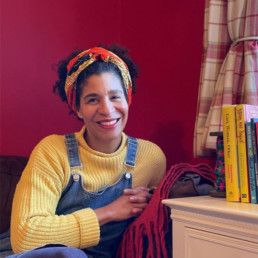
Written by Clare Francis-Slater
Clare Francis-Slater is a highly skilled and experienced primary school teacher, having taught for over twenty years in a wide variety of school settings.
Watching documentary shows about Racial issues on the television? Reading about it in our papers/magazines? Doing training days at work about it? Why is such a thing being made of it at the moment in the media? Doesn’t it make Racism more of an issue? Don’t we (liberal, nice, well-intentioned people) treat all people equally now anyway? Isn’t it better not to be pointing out and focusing on our differences? To not be talking about it – surely is better. Isn’t it?
I hear these types of comments from people from all walks of life – educated, well-meaning, good people, people I know well. These sorts of comments are borne from the ideological solution that grew out of the civil rights movement in America in the 1960s – it’s called ‘colour-blindness. It’s the idea that if we don’t talk about ‘race’ and ‘racial differences’, then ‘racism’ will just end. The fact is, we have all been brought up to believe that this is the best way to end racial discrimination and so have carried on like this, not ‘noticing’ differences … I think it’s fair to say, it hasn’t worked!
When people say, ‘I don’t see colour’ (of course they do) what they mean is ‘It doesn’t make any difference to me what colour you are’. However well-intentioned this sentiment is, it is also saying, ‘I don’t acknowledge your history and the racism you may experience living in a white-majority culture’. Having an outlook of ‘colour-blindness’ erases a person of colours past and the struggles and histories of their ancestors and also unintentionally seeks to deny them their unique identity.
A Black or brown person’s skin colour is part of them, it’s part of their identity, a connection to their history and the migration story of their own family. Rather than pretend we don’t see differences, we would do better to acknowledge and celebrate our differences, they are what make us all unique. We can acknowledge our shared inter-woven histories that have connected and bound us together over many hundreds of years – the (good?), the bad and the ugly. By doing so, it also allows us to celebrate the positive contribution to this country of people from its former colonies from post-war Britain and before.
We are still talking about ‘race’ because still in 2021, Black and brown people are still facing discrimination and inequalities across criminal justice, education, employment, health, housing and representation in the arts and media.
Facts:
For example, in the criminal justice system, Black people are around 18 times more likely to be searched by the police than white people. Ethnic minority children make up over half of the child population in prison (28% are Black). This is an increase of 15% over the past decade. Rates of prosecution and sentencing for Black people were three times higher than for White people.
In education, Black Caribbean and Mixed White/Black Caribbean children have rates of permanent exclusion about three times that of the pupil population as a whole.
In employment, unemployment rates were significantly higher for ethnic minorities at 12.9% compared with 6.3 per cent for White people. Black workers with degrees earn 23.1%less on average than white workers. In Britain, significantly lower percentages of ethnic minorities (8.8%) worked as managers, directors and senior officials, compared with White people (10.7%) and this was particularly true for African or Caribbean or Black people (5.7%) and those of mixed ethnicity (7.2%) Black people who leave school with A-levels typically get paid 14.3%less than their white peers.
In health, Black women in the UK are still four times (last year five times) more likely to die in pregnancy or childbirth than white women. Black people are four times as likely to be detained under the Mental Health Act and arrested under s. 136 twice as often and they are put on CTOS eight times more frequently than white people. Black women experience substantially higher rates of common mental health problems than white women. When it comes to psychosis, Black men experience it around ten times more frequently than white men.
In housing, almost half (46%) of Black households in the UK are in poverty, compared with just under one in five white families.
‘Progress has been made. But race has become a needlessly fractious issue in the national discourse, and many members of our Black and minority ethnic communities continue to experience stark disproportionate outcomes in their life chances,’ says Dr Halima Begum, CEO of the Runnymede Trust.
‘From stop and search to inequalities in maternal health; lower levels of home ownership to constraints on pay and professional opportunities, [The State of the Nation] report provides further evidence that taking a colourblind approach to equality will not be the most effective way to achieve social mobility.’ This report, which has been endorsed by 78 NGOs and race equality organisations, also offers recommendations for the government, including an urgent review of its approach to equalities. Runnymede Trust / State of the Nation: New comprehensive analysis on race in Britain See more links to support this assertion. Race report statistics | Equality and Human Rights Commission (equalityhumanrights.com)
A child of three years of age, said to me last week, ‘They are brown!’ talking of another young child at the nursery setting. I replied, ‘Yes they are. Just like me! All different. All special!’ (The positive inclusive moto of the school) I smiled at the innocence of the child, it was a simple observation, nothing more. Wouldn’t it better if society could act like that child and stop pretending that we cannot see our physical differences, but just accept and acknowledge them positively, as we teach our children to do. There is nothing wrong with difference, difference is good.
What is wrong, is not acknowledging that we have racial discrimination in society still today, that it is no longer an issue. Black and brown people cannot do this – they experience it firsthand on a daily-basis as they navigate a white-majority culture as an ethnic minority in the UK. Some white people choose to pretend it is not an issue – because they can, silence for them is an option. It is easier and more comfortable for them to not acknowledge the issue. But the question is … how can we make society better and more equal, if we don’t even acknowledge that Racism exists and talk about it?
So people … let’s keep the conversation about ‘race’ going … so that that little innocent child never grows up to think that they are ‘better’ than the another one, simply because of the colour of their skin. Racism is a learned (mostly unconscious bias) thought process which affects people’s behaviour towards others. We owe it to ourselves and the next generation to put the time and work in to make this world a better place for us all to live in.
How we can bring LGBT+ families into primary school storytime with Grandad’s Camper
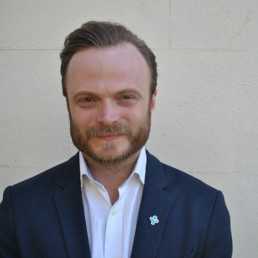
Written by Dominic Arnall
Chief Executive of Just Like Us, the LGBT+ young people's charity.
Diverse families, kindness and respecting difference are all key elements of the primary curriculum that we’re probably all familiar with, but the reality of making these conversations LGBT+ inclusive may not always be so obvious or seem immediately possible.
At Just Like Us, the LGBT+ young people’s charity, we know that growing up LGBT+ is still unacceptably tough. LGBT+ school pupils are twice as likely to be bullied and the same anti-LGBT+ language and bullying also impacts pupils who aren’t LGBT+ but have LGBT+ families or are perceived to against the ‘norms’.
We often hear from primary school staff keen to make changes in their school so that pupils can better learn about the diversity of the world around them – including that some families have two mums or two dads.
So, we want to help all school staff on this journey. We know your time is limited and you may be nervous or unsure where to start with LGBT+ inclusion, so we produce ready-to-go, free resources for primary and secondary schools.
Ahead of School Diversity Week, Just Like Us is releasing a new series of primary storytime resources.
The first in our series is a video of award-winning author Harry Woodgate reading from their book Grandad’s Camper, that you can screen with your primary class.
Grandad’s Camper won the Waterstones Children’s Book Prize Best Illustrated Book 2022 and is a wonderful book to start conversations with your pupils about families that aren’t heteronormative, or the ‘typical’ family set up.
The book follows the story of a girl and her grandad who takes them on a special campervan trip, sharing heartwarming stories of his adventures with the late Gramps, Grandad’s partner who passed away.
Alongside our storytime video resource, we have a reading guide with discussion prompts and ideas on how to use the book as a writing prompt – such as ‘How do you think Grandad and Gramps felt when they went on all their travels?’ and ‘How do you think Grandad feels now Gramps isn’t there any more?’
The resources are free to access for all UK primary school staff – simply sign up for School Diversity Week to download them.
We’re delighted to be working with Harry Woodgate and Andersen Press to open up much-needed conversations around diverse families in primary schools this School Diversity Week, and hope the resources are helpful to primary staff looking to celebrate diverse families.
We’ll also be giving away copies of Grandad’s Camper to UK primary school staff who sign up for School Diversity Week before the end of May 2022.
School Diversity Week is the UK-wide celebration of LGBT+ equality in primary and secondary schools run by charity Just Like Us and takes place 20-24 June this year.
Review of Diverse Educators: A Manifesto, ed Hannah Wilson and Bennie Kara (University of Buckingham Press, 2022)
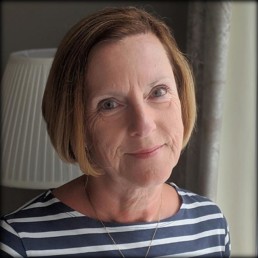
Written by Dr Jill Berry
Thirty years teaching across six different schools in the UK, state and independent, and was a head for the last ten. Has since completed a doctorate and written a book.
This book is a collaborative tour de force. Rarely have I read anything which has made me think as much as this book has. Tapping into the experiences of a wide range of writers whose lives have been, in so many ways, quite different from my own, has been sobering, humbling but ultimately energising. This book deserves to be widely read, robustly discussed and, crucially, its key messages need to be acted upon so that we work to change our world for the better – for everyone.
I appreciate that this is not necessarily a book most people would read from cover to cover. It is a weighty tome! It devotes one section to each of the nine protected characteristics, adds a chapter on intersectionality, a prologue and an epilogue. It is an amazing accomplishment, bringing together the views of 125 contributors, including the ten chapter editors, and Hannah and Bennie, who all share their stories and their perspectives. The book goes far beyond the exploration of personal stories, however.
I imagine that many people would identify a specific section, or several sections, about which they wished to develop their knowledge and understanding, and would focus on that part of the book. But I want to advocate for reading it all. Even if you feel that there are certain characteristics that you believe you fully understand and appreciate – perhaps you share them – I suggest that every section has something to teach us. And as you make your way through each separate section, you appreciate the connections, the echoes and the common ground, reinforcing the essential humanity which underpins this story of ‘difference’. As Bennie says in our Myatt & Co interview about the book: ‘No-one is just one thing.’
The range of contributors is one of the reasons this book resonates. Different contributors ranging from teenagers to the considerably more mature contingent; UK and overseas perspectives; primary, secondary and FE educators; state and independent sector teachers and leaders; many who share a number of protected characteristics offer their experiences, views and their own learning with generosity, honesty and courage.
Many of the stories are strongly grounded in research, and the book contains a great number of references, on which the contributors draw and which they share for those who wish to explore further through additional reading. It is also eminently practical, with key takeaways, key questions and specific commitments at the end of each chapter and a final section in which Bennie and Hannah make clear how readers can act on their reflections as they have worked through the different sections and what they have learnt as a result. They exhort us to consider: what difference will this make? It made me think of Zoe and Mark Enser’s words in ‘The CPD Curriculum’: “CPD does not happen through a particular input of information; CPD occurs through what happens next.” When you get to the end of the book, you are strongly encouraged to think about what action you will take as a result of the experience.
I strongly recommend ‘Diverse Educators: A Manifesto’. Bennie Kara’s words in the epilogue mirrored perfectly my own response to the book: “Throughout the book, I have been struck by the honesty of the contributing authors… I have seen in the writing parts of myself – feelings, thoughts and experiences that have served to demonstrate how we as education professionals have complex and interweaving experiences…In reading these chapters, even if I do not share a particular person’s protected characteristic, I have recognised the intensely human need to be heard.”
I would encourage you to make the time to read the whole book. I am confident that you won’t regret it.
Weaving Diverse Narratives into the Curriculum with Human Stories

Written by Anna Szpakowska
Professional Development Lead at Lyfta
The importance of using a wide range of diverse human stories in our classrooms cannot be underestimated. There is clearly a desire amongst staff and students to broaden the curriculum to include these stories. Beyond that desire, however, there are numerous benefits to using diverse narratives in the classroom that include improving student engagement, nurturing character development and supporting academic progress too. In this blog, we’ll explore the importance of using diverse human stories, how this can be done and the potential impact it can have for your students.
Why diverse human stories?
It’s clear that the past few years have seen a heightened awareness and desire amongst the teaching profession to make the curriculum a more diverse and inclusive one. All teachers are bound by an adherence to the Equality Act of 2010 as well as the Public Sector Equality Duty, but recent polls have shown that there is still a desire to do more. For example, one survey commissioned by Pearson and conducted by Teacher Tapp revealed that 89% of secondary teachers and 60% of primary teachers felt that there was more diversity required in the set texts that they teach.
However, this clearly isn’t just an issue that concerns English teachers. Pearson’s own report, Diversity and inclusion in schools, reveals that teachers feel that their curricula are not fully representative of the communities in which they work. The results reveal that teachers feel most concerned by the under-representation of people of identify as non-binary and people identifying as LGBT+. The report goes on to list a variety of different reasons as to why this representation is important. These reasons include:
- creating a sense of belonging for staff and students alike
- reducing instances of bullying and mental health problems
- reducing barriers to achievement
So how do stories help us achieve this? Narratives have long been at the heart of teaching and learning and real-life stories have the potential to inspire students. For example, research conducted by Immordino Yang shows that experiencing human stories can motivate students into action and that the best learning takes place when students care about what it is they’re learning.
If stories have the potential to motivate students and to make them care, it’s clear that there’s a reason to embed them in our curricula. More than that, it’s clear by ensuring there are a wide range of diverse voices included, it has the potential to improve student wellbeing and progress too.
How can this be achieved?
Lyfta is an educational platform that allows students to travel the world without leaving the comfort of their classrooms. Teachers can teach lessons or set lessons for students to complete independently, that take them into Lyfta’s 360° storyworlds. Storyworlds are immersive environments that contain images, 360° videos, articles and short documentary films. These short documentary films connect students with individuals from the communities that they are visiting. All of Lyfta’s documentary films contain an inspiring central character who models resilience, problem solving and positive values, supporting students to think creatively and critically.
Lyfta has a wide range of lesson plans for teachers to use, to support them to successfully embed diverse narratives into their curriculum. These lesson plans are mapped against 12 different subject areas, cover a range of protected characteristics and all 17 of the United Nations Sustainable Development Goals.
We’ve seen great success of teachers using the platform with students from key stage one all the way up to key stage five. We know that students enjoy their lessons with Lyfta with 94% of Lyfta users indicating that their students are highly engaged or enjoy using Lyfta.
What impact will it have?
When assessing the impact of our work, we’ve seen that not only do students enjoy using the platform but that there are a number of other effects on their personal development and educational achievement too. Students at a sixth form college in Kent describe the experience of recognising the shared experience of humanity across the world, describing the moment they realised that the people in Lyfta’s documentary films were ‘thinking about the [same] things we do in our everyday lives’ and that preconceptions or ‘assumptions’ the students may have had beforehand ‘were undone’.
In addition to this work done at a secondary school in Essex revealed that Lyfta’s wide range of documentary films and storyworlds helped teachers to embed school values, with the vast majority of students finding that their understanding of their school values increased after completing a unit of work, using Lyfta lessons. In exploring values across the world, students are able to see our shared human values, thus normalising diversity and helping students to understand that we have more in common than our perceived differences.
These findings are also supported by independent research, conducted by the University of Tampere in Finland. This research revealed that ‘the multi-sensory and participatory nature of immersive 360° experiences led to a decrease in learners’ sense of social anxiety about meeting people from different cultural backgrounds. Engaging with new people in an immersive virtual setting gives students the opportunity to identify common interests and, as a result, develop more positive feelings towards them.’ Therefore, the way Lyfta helps to normalise diversity has two significant implications; first, it helps to reduce anxiety and prejudice amongst those students who feel worried about others who are different from themselves. Secondly, for those students who may have experienced discrimination or marginalisation, Lyfta’s storyworlds and documentary films also allow them an opportunity to see themselves reflected in the stories presented to them at school.
Raising Awareness of Showmen in Education
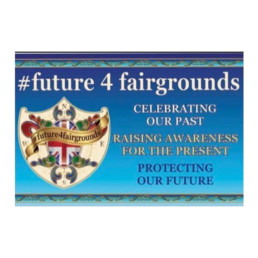
Written by Future4Fairgrounds
Future4Fairgrounds formed in September 2020. We are 6 lady Showmen. Our group is an additional voice of our community. We are celebrating our past, raising awareness of our present situation and protecting our future!
Future4Fairgrounds are a group of 6 lady Showmen who came together in September 2020 because of our concerns surrounding the issues Showmen were facing due to the impact of the pandemic. Our initial focus was to highlight the fairs that were unable to open during 2020 and create a better understanding of the amount of Showman families that were affected because of this. We attended many locations that would have had fairgrounds with our #f4f banners which displayed our aims – “to celebrate our past, raise awareness for the present and protect our future”. We raised our profile on social media, contacted our own MPs and became an additional voice for our community establishing ourselves alongside the number of trade body representatives that speak for our industry. We realised from the interest in F4F that there was a very real need for a community group such as ours and we were very proud to be mentioned in a Westminster debate in December of 2020.
We have continued to remain as a proactive group for a full year and our group F4F celebrated being one year old on 24th September 2021.
This anniversary took place during World Fun Fair Month. An initiative we created to help raise further awareness of our community and join together with other Showmen on a global scale.
“I Am A Showman” was declared by Showmen of all ages, genders and nationalities and highlighted a community coming together united in their pride for who we are as a people. It was a perfect start to a month-long celebration. The WFFM logo was also flown at fairgrounds in the U.K. and around the world making its way to Australia, New Zealand and even Times Square New York! WFFM was supported by so many people that it became much bigger than we ever expected. The project evolved organically and we were overwhelmed at the success of the event.
One major success of WFFM involved the newly published independent reading book The Show Must Go On. Having been contacted by co author Michelle Russel early on in F4F’s conception it was wonderful to hear about the positive representation in this book. We did not have any input in the book’s creation but we could see the huge impact this little book could have and we wanted to make sure this ground-breaking book was available to as many schools as possible. With the help of money we had donated to us and money we had raised we were able to place an initial order and buy 1000 copies. To tie in with WFFM we gave them to schools that had fairgrounds linked to their towns during September.
This amazing little book is so much more than a reading book it can be used as a tool to spark a thought, start a conversation and raise awareness of our community and with the help of WFFM making further links to the towns the Showmen visit annually. Many teachers have been in touch as they are aware that there is a lack of understanding and knowledge about Showmen. They understand the need for positive representation of our community in their school and in the education system as a whole. Since September our “book project” has gone from strength to strength and we have purchased a further 4000 books! They have been given to schools that have Showman children in as well as schools without Showmen students.
In 2022 our focus remains with raising awareness of Showmen in education. This has been extended from our initial look at primary schools into every stage of learning and teaching. We are hoping we can make changes in early years right through to higher education. Especially with more Showmen than ever before staying on in school, achieving fantastic exam results and following their academic career into university. We think education is key to raising awareness. If we can help stop misconceptions and prejudice by offering an authentic voice and sharing positive, accurate information with teachers in schools and universities to share with their students. We can create a better understanding of who Showmen are from the ground up. We hope that we can encourage schools and universities to identify the Showmen that they do have in attendance in an official way on enrolment forms. At the moment our community is invisible on most forms. With our collaboration with the organisations who worked on the GTRSB pledge into higher education and this being developed and adapted to be applied in other educational settings, we are hopeful we can make a difference to how Showmen are seen and bring about a change for the better.
F4F is certainly here to stay as a community voice and we look forward to celebrating World Fun Fair Month with everyone again in September!

